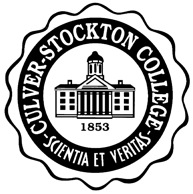Below is a summary of the abstract you submitted. Presenting author(s) is shown in bold.
If any changes need to be made, you can modify the abstract or change the authors.
You can also download a .docx version of this abstract.
If there are any problems, please email Dan at dar78@pitt.edu and he'll take care of them!
This abstract was last modified on May 12, 2016 at 12:20 p.m..

A group of undergraduate students from Culver-Stockton College worked together to analyze the novel bacteriophage BABY16. It was first isolated and identified by Grace Lanceman in 2014, and discovery of eight new phages were made in 2015. In 2016, group members worked to annotate the BABY16 genome. Each phage discovery was obtained from a variety of soil samples in the Northeast Missouri region. The bacteriophage samples were subjected to enrichment which was performed by using the bacterial host Mycobacterium smegmatis mc2. Samples were then subjected to several rounds of purification in order to achieve a homogenous phage population. Lysates prepared from this phage sample were sent to the Donald Danforth Plant Science Center, located in St. Louis, MO, for analysis by electron microscopy and for sequencing at the University of Pittsburgh. The BABY16 genome was found to be 51,383 base pairs in length and was assigned to cluster A, subcluster A4 by the public phage BLAST tool available on phagesdb.org. While a significant number of these genes reported no known function, others were successfully matched with functions. These included a terminase, portal proteins, major head and tail proteins, and minor head and tail proteins. The programs HHPred, Phamerator and Blastp at NCBI were all used to assign the proteins functions when possible.


